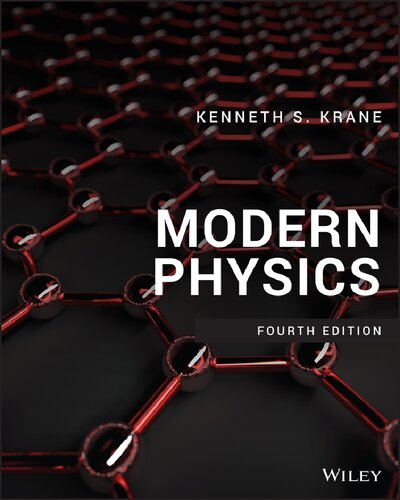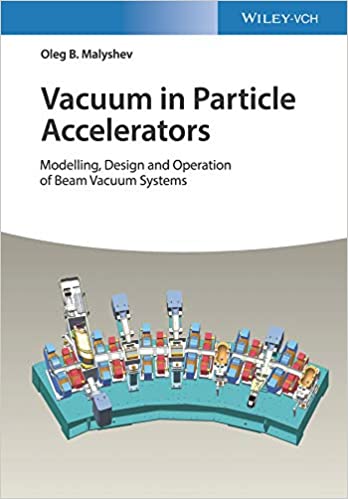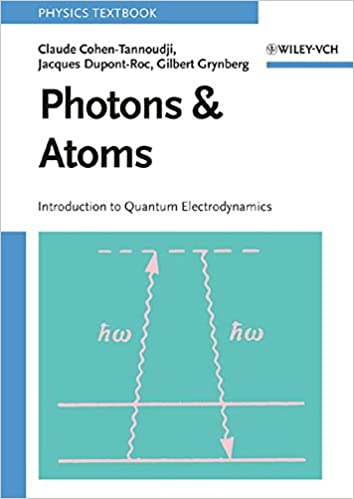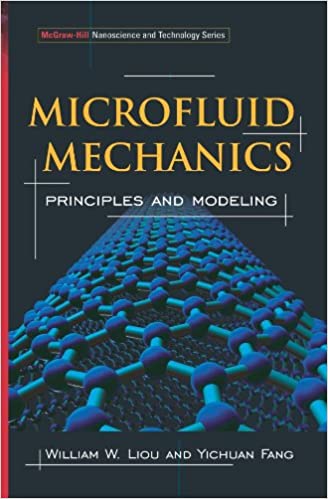Introduction to Fourier Optics 4th Edition by Joseph W. Goodman, ISBN-13: 978-1319119164
[PDF eBook eTextbook]
- Publisher: W. H. Freeman; Fourth edition (May 1, 2017)
- Language: English
- 564 pages
- ISBN-10: 1319119166
- ISBN-13: 978-1319119164
Goodman’s textbook focuses on applications in optics, and in particular with applications to diffraction, imaging, optical information processing, holography, and optical communications.
This textbook satisfies the needs of several different types of Physics and Engineering courses. Directed towards both physicists and engineers this text is suitable for audiences focusing on applications of optics. A clear comprehensive presentation makes this text work well as both a teaching resource and a reference book.
Table of Contents:
1. Preface
2. 1 Introduction
1. 1.1 Optics, Information, and Communication
2. 1.2 The Book
3. 2 Analysis of Two-Dimensional Signals and Systems
1. 2.1 Fourier Analysis in Two Dimensions
1. 2.1.1 Definition and Existence Conditions
2. 2.1.2 The Fourier Transform as a Decomposition
3. 2.1.3 Fourier Transform Theorems
4. 2.1.4 Separable Functions
5. 2.1.5 Functions with Circular Symmetry: Fourier-Bessel Transforms
6. 2.1.6 Some Frequently Used Functions and Some Useful Fourier Transform Pairs
2. 2.2 Spatial Frequency and Space-Frequency Localization
1. 2.2.1 Local Spatial Frequencies
2. 2.2.2 The Wigner Distribution Function
3. 2.3 Linear Systems
1. 2.3.1 Linearity and the Superposition Integral
2. 2.3.2 Invariant Linear Systems: Transfer Functions
4. 2.4 Two-Dimensional Sampling Theory
1. 2.4.1 The Whittaker-Shannon Sampling Theorem
2. 2.4.2 Oversampling, Undersampling and Aliasing
3. 2.4.3 Space-Bandwidth Product
5. 2.5 The Discrete Fourier Transform
6. 2.6 The Projection-Slice Theorem
7. 2.7 Phase Retrieval from Fourier Magnitude
4. 3 Foundations of Scalar Diffraction Theory
1. 3.1 Historical Introduction
2. 3.2 From a Vector to a Scalar Theory
3. 3.3 Some Mathematical Preliminaries
1. 3.3.1 The Helmholtz Equation
2. 3.3.2 Green’s Theorem
3. 3.3.3 The Integral Theorem of Helmholtz and Kirchhoff
4. 3.4 The Kirchhoff Formulation of Diffraction by a Planar Screen
1. 3.4.1 Application of the Integral Theorem
2. 3.4.2 The Kirchhoff Boundary Conditions
3. 3.4.3 The Fresnel-Kirchhoff Diffraction Formula
5. 3.5 The Rayleigh-Sommerfeld Formulation of Diffraction
1. 3.5.1 Choice of Alternative Green’s Functions
2. 3.5.2 The Rayleigh-Sommerfeld Diffraction Formula
3. 3.5.3 Reproduction of Boundary Conditions
6. 3.6 Kirchhoff and Rayleigh-Sommerfeld Theories Compared
7. 3.7 Further Discussion of the Huygens-Fresnel Principle
8. 3.8 Generalization to Nonmonochromatic Waves
9. 3.9 Diffraction at Boundaries
10. 3.10 The Angular Spectrum of Plane Waves
1. 3.10.1 The Angular Spectrum and Its Physical Interpretation
2. 3.10.2 Propagation of the Angular Spectrum
3. 3.10.3 Effects of a Diffracting Aperture on the Angular Spectrum
4. 3.10.4 The Propagation Phenomenon as a Linear Spatial Filter
5. 4 Fresnel and Fraunhofer Diffraction
1. 4.1 Background
1. 4.1.1 The Intensity of a Wave Field
2. 4.1.2 The Huygens-Fresnel Principle in Rectangular Coordinates
2. 4.2 The Fresnel Approximation
1. 4.2.1 Positive vs. Negative Phases
2. 4.2.2 Accuracy of the Fresnel Approximation
3. 4.2.3 Finite Integral of the Quadratic-Phase Exponential Function
4. 4.2.4 The Fresnel Approximation and the Angular Spectrum
5. 4.2.5 Fresnel Diffraction Between Confocal Spherical Surfaces
6. 4.2.6 Fresnel Diffraction in Terms of Ray Transfer Matrices
3. 4.3 The Fraunhofer Approximation
4. 4.4 Examples of Fraunhofer Diffraction Patterns
1. 4.4.1 Rectangular Aperture
2. 4.4.2 Circular Aperture
3. 4.4.3 Thin Sinusoidal Amplitude Grating
4. 4.4.4 Thin Sinusoidal Phase Grating
5. 4.4.5 General Method for Calculating Diffraction Efficiency of Gratings
5. 4.5 Examples of Fresnel Diffraction Calculations
1. 4.5.1 Fresnel Diffraction by a Square Aperture
2. 4.5.2 Fresnel Diffraction by a Circular Aperture
3. 4.5.3 Fresnel Diffraction by a Sinusoidal Amplitude Grating-Talbot Images
6. 4.6 Beam Optics
1. 4.6.1 Gaussian Beams
2. 4.6.2 Hermite-Gaussian Beams
3. 4.6.3 Laguerre-Gaussian Beams
4. 4.6.4 Bessel Beams
6. 5 Computational Diffraction and Propagation
1. 5.1 Approaches to Computational Diffraction
2. 5.2 Sampling a Space-Limited Quadratic-Phase Exponential
3. 5.3 The Convolution Approach
1. 5.3.1 Bandwidth and Sampling Considerations
2. 5.3.2 Discrete Convolution Equations
3. 5.3.3 Simulation Results
4. 5.3.4 Convolution by Fourier Transforms
4. 5.4 The Fresnel Transform Approach
1. 5.4.1 Sampling Increments
2. 5.4.2 Sampling Ratio Q
3. 5.4.3 Finding the Required M, Q, and N
4. 5.4.4 The Discrete Diffraction Formulas
5. 5.4.5 Examples of the Dependence of M and N on NF
6. 5.4.6 Summary of Steps Using the Fresnel Transform Approach
7. 5.4.7 Computational Complexity of the Fresnel Transform Approach
5. 5.5 The Fresnel Transfer Function Approach
1. 5.5.1 Sampling Considerations
2. 5.5.2 Finding N, M and Q for each NF
3. 5.5.3 The Discrete Diffraction Formulas
4. 5.5.4 Examples of the Dependence of M, N and Q on NF
5. 5.5.5 Summary of Steps Using the Fresnel Transfer Function Approach
6. 5.5.6 Computational Complexity of the Fresnel Transfer Function Approach
6. 5.6 The Exact Transfer Function Approach
1. 5.6.1 Sampling in the Frequency Domain
2. 5.6.2 Sampling in the Space Domain
3. 5.6.3 Simulation Results
4. 5.6.4 Computational Complexity of the Exact Transfer Function Approach
7. 5.7 Comparison of Computational Complexities
8. 5.8 Extension to More Complex Apertures
1. 5.8.1 One-Dimensional Case
2. 5.8.2 Two-Dimensional Apertures Separable in (x,y) Coordinates
3. 5.8.3 Circularly-Symmetric Apertures
4. 5.8.4 More General Cases
9. 5.9 Concluding Comments
7. 6 Wave-Optics Analysis of Coherent Optical Systems
1. 6.1 A Thin Lens as a Phase Transformation
1. 6.1.1 The Thickness Function
2. 6.1.2 The Paraxial Approximation
3. 6.1.3 The Phase Transformation and Its Physical Meaning
2. 6.2 Fourier Transforming Properties of Lenses
1. 6.2.1 Input Placed against the Lens
2. 6.2.2 Input Placed in Front of the Lens
3. 6.2.3 Input Placed behind the Lens
4. 6.2.4 Example of an Optical Fourier Transform
3. 6.3 Image Formation: Monochromatic Illumination
1. 6.3.1 The Impulse Response of a Positive Lens
2. 6.3.2 Eliminating Quadratic-Phase Factors: The Lens Law
3. 6.3.3 The Relation between Object and Image
4. 6.4 Analysis of Complex Coherent Optical Systems
1. 6.4.1 The Ray Matrix Approach
2. 6.4.2 Analysis of Two Optical Systems Using Ray Matrices
8. 7 Frequency Analysis of Optical Imaging Systems
1. 7.1 Generalized Treatment of Imaging Systems
1. 7.1.1 A Generalized Model
2. 7.1.2 Effects of Diffraction on the Image
3. 7.1.3 Polychromatic Illumination: The Coherent and Incoherent Cases
2. 7.2 Frequency Response for Diffraction-Limited Coherent Imaging
1. 7.2.1 The Amplitude Transfer Function
2. 7.2.2 Examples of Amplitude Transfer Functions
3. 7.3 Frequency Response for Diffraction-Limited Incoherent Imaging
1. 7.3.1 The Optical Transfer Function
2. 7.3.2 General Properties of the OTF
3. 7.3.3 The OTF of an Aberration-Free System
4. 7.3.4 Examples of Diffraction-Limited OTFs
4. 7.4 Aberrations and Their Effects on Frequency Response
1. 7.4.1 The Generalized Pupil Function
2. 7.4.2 Effects of Aberrations on the Amplitude Transfer Function
3. 7.4.3 Effects of Aberrations on the OTF
4. 7.4.4 Example of a Simple Aberration: A Focusing Error
5. 7.4.5 Apodization and Its Effects on Frequency Response
5. 7.5 Comparison of Coherent and Incoherent Imaging
1. 7.5.1 Frequency Spectrum of the Image Intensity
2. 7.5.2 Two-Point Resolution
3. 7.5.3 Other Effects
6. 7.6 Confocal Microscopy
1. 7.6.1 Coherent Case
2. 7.6.2 Incoherent Case
3. 7.6.3 Optical Sectioning
9. 8 Point-Spread Function and Transfer Function Engineering
1. 8.1 Cubic Phase Mask for Increased Depth of Field
1. 8.1.1 Depth of Focus
2. 8.1.2 Depth of Field
3. 8.1.3 The Cubic Phase Mask
2. 8.2 Rotating Point-Spread Functions for Depth Resolution
3. 8.3 Point-Spread Function Engineering for Exoplanet Discovery
1. 8.3.1 The Lyot Coronagraph
2. 8.3.2 Apodization for Starlight Suppression
4. 8.4 Resolution beyond the Classical Diffraction Limit
1. 8.4.1 Analytic Continuation
2. 8.4.2 Synthetic Aperture Fourier Holography
3. 8.4.3 Fourier Ptychography
4. 8.4.4 Coherent Spectral Multiplexing
5. 8.4.5 Incoherent Structured Illumination Imaging
6. 8.4.6 Super-Resolved Fluorescence Microscopy
5. 8.5 Light Field Photography
10. 9 Wavefront Modulation
1. 9.1 Wavefront Modulation with Photographic Film
1. 9.1.1 The Physical Processes of Exposure, Development, and Fixing
2. 9.1.2 Definition of Terms
3. 9.1.3 Photographic Film or Plate in Coherent Optical Systems
4. 9.1.4 The Modulation Transfer Function
5. 9.1.5 Bleaching of Photographic Emulsions
2. 9.2 Wavefront Modulation with Diffractive Optical Elements
1. 9.2.1 Single Step Lithography
2. 9.2.2 Multistep Lithography
3. 9.2.3 Other Types of Diffractive Optics
4. 9.2.4 A Word of Caution
3. 9.3 Liquid Crystal Spatial Light Modulators
1. 9.3.1 Properties of Liquid Crystals
2. 9.3.2 Spatial Light Modulators Based on Liquid Crystals
4. 9.4 Deformable Mirror Spatial Light Modulators
5. 9.5 Acousto-Optic Spatial Light Modulators
6. 9.6 Other Methods of Wavefront Modulation
11. 10 Analog Optical Information Processing
1. 10.1 Historical Background
1. 10.1.1 The Abbe-Porter Experiments
2. 10.1.2 The Zernike Phase-Contrast Microscope
3. 10.1.3 Improvement of Photographs: Maréchal
4. 10.1.4 Application of Coherent Optics to More General Data Processing
2. 10.2 Coherent Optical Information Processing Systems
1. 10.2.1 Coherent System Architectures
2. 10.2.2 Constraints on Filter Realization
3. 10.3 The VanderLugt Filter
1. 10.3.1 Synthesis of the Frequency-Plane Mask
2. 10.3.2 Processing the Input Data
3. 10.3.3 Advantages of the VanderLugt Filter
4. 10.4 The Joint Transform Correlator
5. 10.5 Application to Character Recognition
1. 10.5.1 The Matched Filter
2. 10.5.2 A Character-Recognition Problem
3. 10.5.3 Optical Synthesis of a Character-Recognition Machine
4. 10.5.4 Sensitivity to Scale Size and Rotation
6. 10.6 Image Restoration
1. 10.6.1 The Inverse Filter
2. 10.6.2 The Wiener Filter, or the Least-Mean-Square-Error Filter
3. 10.6.3 Filter Realization
7. 10.7 Acousto-Optic Signal Processing Systems
1. 10.7.1 Bragg Cell Spectrum Analyzer
2. 10.7.2 Space-Integrating Correlator
3. 10.7.3 Time-Integrating Correlator
4. 10.7.4 Other Acousto-Optic Signal Processing Architectures
8. 10.8 Discrete Analog Optical Processors
1. 10.8.1 Discrete Representation of Signals and Systems
2. 10.8.2 A Parallel Incoherent Matrix-Vector Multiplier
3. 10.8.3 Methods for Handling Bipolar and Complex Data
12. 11 Holography
1. 11.1 Historical Introduction
2. 11.2 The Wavefront Reconstruction Problem
1. 11.2.1 Recording Amplitude and Phase
2. 11.2.2 The Recording Medium
3. 11.2.3 Reconstruction of the Original Wavefront
4. 11.2.4 Linearity of the Holographic Process
5. 11.2.5 Image Formation by Holography
3. 11.3 The Gabor Hologram
1. 11.3.1 Origin of the Reference Wave
2. 11.3.2 The Twin Images
3. 11.3.3 Limitations of the Gabor Hologram
4. 11.4 The Leith-Upatnieks Hologram
1. 11.4.1 Recording the Hologram
2. 11.4.2 Obtaining the Reconstructed Images
3. 11.4.3 The Minimum Reference Angle
4. 11.4.4 Holography of Three-Dimensional Scenes
5. 11.4.5 Practical Problems in Holography
5. 11.5 Image Locations and Magnification
1. 11.5.1 Image Locations
2. 11.5.2 Axial and Transverse Magnifications
3. 11.5.3 An Example
6. 11.6 Some Different Types of Holograms
1. 11.6.1 Fresnel, Fraunhofer, Image, and Fourier Holograms
2. 11.6.2 Transmission and Reflection Holograms
3. 11.6.3 Holographic Stereograms
4. 11.6.4 Rainbow Holograms
5. 11.6.5 Multiplex Holograms
6. 11.6.6 Embossed Holograms
7. 11.7 Thick Holograms
1. 11.7.1 Recording a Volume Holographic Grating
2. 11.7.2 Reconstructing Wavefronts from a Volume Grating
3. 11.7.3 Fringe Orientations for More Complex Recording Geometries
4. 11.7.4 Gratings of Finite Size
5. 11.7.5 Diffraction Efficiency—Coupled Mode Theory
8. 11.8 Recording Materials
1. 11.8.1 Silver Halide Emulsions
2. 11.8.2 Photopolymer Films
3. 11.8.3 Dichromated Gelatin
4. 11.8.4 Photorefractive Materials
9. 11.9 Computer-Generated Holograms
1. 11.9.1 The Sampling and Computation Problems
2. 11.9.2 The Representational Problem
10. 11.10 Degradations of Holographic Images
1. 11.10.1 Effects of Film MTF
2. 11.10.2 Effects of Film Nonlinearities
3. 11.10.3 Effects of Film-Grain Noise
4. 11.10.4 Speckle Noise
11. 11.11 Digital Holography
1. 11.11.1 Offset Reference-Wave Digital Holography
2. 11.11.2 Phase-Shifting Digital Holography
12. 11.12 Holography with Spatially Incoherent Light
13. 11.13 Applications of Holography
1. 11.13.1 Microscopy and High-Resolution Volume Imagery
2. 11.13.2 Interferometry
3. 11.13.3 Imaging through Distorting Media
4. 11.13.4 Holographic Data Storage
5. 11.13.5 Holographic Weights for Artificial Neural Networks
6. 11.13.6 Other Applications
13. 12 Fourier Optics in Optical Communications
1. 12.1 Introduction
2. 12.2 Fiber Bragg Gratings
1. 12.2.1 Introduction to Optical Fibers
2. 12.2.2 Recording Gratings in Optical Fibers
3. 12.2.3 Effects of an FBG on Light Propagating in the Fiber
4. 12.2.4 Applications of FBGs
5. 12.2.5 Gratings Operated in Transmission
3. 12.3 Ultrashort Pulse Shaping and Processing
1. 12.3.1 Mapping of Temporal Frequencies to Spatial Frequencies
2. 12.3.2 Pulse Shaping System
3. 12.3.3 Applications of Spectral Pulse Shaping
4. 12.4 Spectral Holography
1. 12.4.1 Recording the Hologram
2. 12.4.2 Reconstructing the Signals
3. 12.4.3 Effects of Delay between the Reference Pulse and the Signal Waveform
5. 12.5 Arrayed Waveguide Gratings
1. 12.5.1 Component Parts of an Arrayed Waveguide Grating
2. 12.5.2 Applications of AWGs
14. A Delta Functions and Fourier Transform Theorems
1. A.1 Delta Functions
2. A.2 Derivation of Fourier Transform Theorems
15. B Introduction to Paraxial Geometrical Optics
1. B.1 The Domain of Geometrical Optics
2. B.2 Refraction, Snell’s Law, and the Paraxial Approximation
3. B.3 The Ray-Transfer Matrix
4. B.4 Conjugate Planes, Focal Planes, and Principal Planes
5. B.5 Entrance and Exit Pupils
16. C Polarization and Jones Matrices
1. C.1 Definition of the Jones Matrix
2. C.2 Examples of Simple Polarization Transformations
3. C.3 Reflective Polarization Devices
17. D The Grating Equation
18. Bibliography
19. Index
Joseph W. Goodman – Held the William Ayer Chair in Electrical Engineering at Stanford, and also served in several administrative posts, including Chair of the Department of Electrical Engineering, and Senior Associate Dean of Engineering for Faculty Affairs. He is now the William Ayer Professor Emeritus. His work has been recognized by a variety of awards and honors, including the F.E. Terman Award of the American Society for Engineering Education, the Dennis Gabor Award of the International Society for Optical Engineering (SPIE), the Max Born Award, the Esther Beller Hoffman Award, the Ives Medal from the Optical Society of America, and the Education Medal of the Institute of Electrical and Electronics Engineers.
What makes us different?
• Instant Download
• Always Competitive Pricing
• 100% Privacy
• FREE Sample Available
• 24-7 LIVE Customer Support




Luke Barnes (verified owner) –
Got my eBook within seconds—thank you!